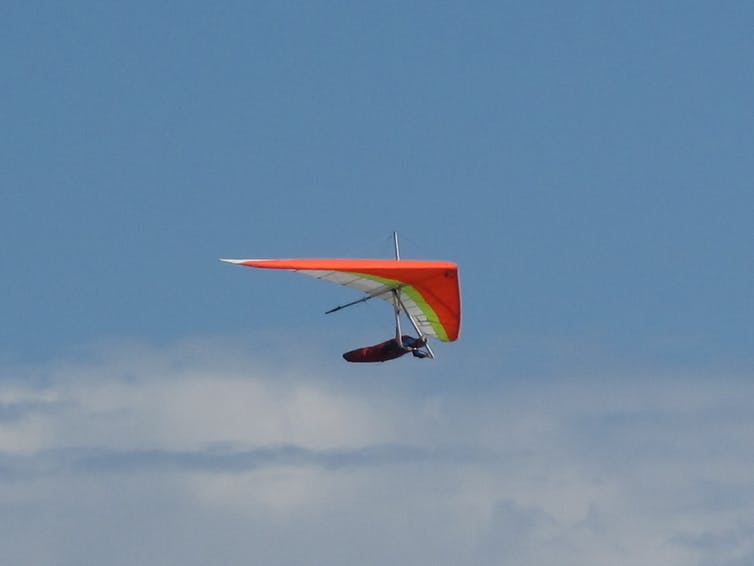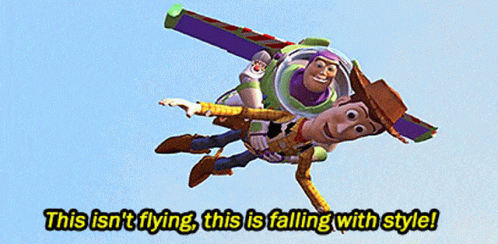If you or I jump in the air as high as possible, we can stay off the ground for about half a second. Michael Jordan could stay aloft for almost one second. While there are many events at the Winter Olympics that feature athletes performing feats of athleticism and strength while high in the air, none blur the line between jumping and flying quite as much as the ski jump.
I teach students about the physics of sports. The ski jump is perhaps one of the most intriguing events in the Winter Games to showcase physics in action. The winner is the athlete who travels the farthest and who flies and lands with the best style. By turning their skis and bodies into what is essentially a wing, ski jumpers are able to fight gravity and stay airborne for five to seven seconds as they travel about the length of a football field through the air. So how do they do this?

Hang gliders have large wings, are very aerodynamic and are very light, all of which maximize lift to produce long flights despite the lack of an engine.
Gegik via WikimediaCommons, CC BY-SA
How to fly
Three major concepts from physics are at play in the ski jump: gravity, lift and drag.
Gravity pulls any object in flight down toward the ground. Gravity acts on all objects equally and there is nothing athletes can do to lessen its effect. But the athletes also interact with the air as they move. It is this interaction that can produce lift, which is an upwards force produced by air pushing on an object. If the force produced from lift roughly balances the force of gravity, an object can glide or fly.
To produce lift, an object needs to be moving. As the object moves through the air, its surface collides with air particles and pushes these particles out of the path of the object. As air particles are pushed down, the object is pushed up according to Newton’s Third Law of motion which says that for every action, there is an equal and opposite reaction. Air particles pushing an object upwards are what create lift. Increasing speed as well as increasing surface area will increase the amount of lift. The angle of attack – the angle of the object relative to the direction of air flow – can also affect lift. Too steep and the object will stall, too flat and it won’t push down on air particles.
While this all may seem complicated, sticking your hand out of a car window illustrates these principles perfectly. If you hold your hand perfectly flat, it will stay more or less in place. However, if you tilt your hand so that bottom is facing the direction of the wind, your hand will be pushed upwards as the air particles collide into it. That is lift.
The same collisions between an object and air that provide lift also produce drag. Drag resists the forward motion of any object and slows it down. As speed decreases, lift does too, limiting the length of a flight.
For ski jumpers, the goal is to use careful body positioning to maximize lift while…



